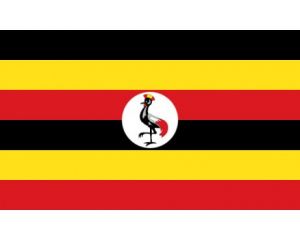Language/Ganda/Grammar/How-to-Use-Be
Hi Ganda learners! 😊
In this lesson, we will learn how to use "be" in Ganda. "Be" in English is a complex verb that can have different meanings depending on the context. The same goes for Ganda. So, let's dive into it and see how it works in this beautiful language.
Introduction
"Be" is an important verb that is used in many languages, including Ganda. We use "be" to show the existence or presence of something, to describe a state or condition, to form the present tense, and to form the passive voice. In Ganda, the verb "be" is expressed by various verbs, such as "li", "ye", and "ko". In this lesson, we will learn how to use these verbs to express "be" in various contexts.
Don't hesitate to look into these other pages after completing this lesson: Negation & Pronouns.
The Present Tense
To form the present tense in Ganda, we use the verb "li". Just like in English, we use "li" to indicate an action that is happening right now. Let's take a look at some examples:
| Ganda | Pronunciation | English |
|---|---|---|
| li nkooye | lee n-koh-oh-ye | I am eating |
| li mpulira | lee m-poo-lee-rah | You are listening |
| li nkuba | lee n-koo-bah | He/She/It is sleeping |
| twali sizannyo | twah-lee see-za-nyo | We are dancing |
| mubiriwo guno | moo-bee-ree-wah goo-noh | You all are here |
| banaabwe babiri | bah-nah-bwe bah-bee-ree | They are two children |
- Person 1: Kati li mpulira? (What are you listening to?)
- Person 2: Nze nninafuna ekigambo kino. (I'm listening to this song.)
The Past Tense
To form the past tense in Ganda, we use the verb "ali". We use "ali" to indicate an action that has already happened. Let's take a look at some examples:
| Ganda | Pronunciation | English |
|---|---|---|
| ali nkuba | ah-lee n-koo-bah | He/She/It was sleeping |
| twali sizannya | twah-lee see-za-nyah | We were dancing |
| mubiriwo gulo | moo-bee-ree-wah goo-loh | You all were here |
- Person 1: Obugenyi bwo bwali bwakya ludda? (What did you eat for breakfast?)
- Person 2: Ndi munyege. (I had porridge.)
The Future Tense
In Ganda, to form the future tense, we use the verb "yeeba". We use "yeeba" to indicate an action that will happen in the future. Let's take a look at some examples:
| Ganda | Pronunciation | English |
|---|---|---|
| nno yeeba nkuweeredde | nno yee-bah n-koo-weh-rehd-deh | Tomorrow I will study |
| mbeera ya yeeba kwagala | m-beh-eh-rah yah yee-bah kwa-gah-lah | Next year, she will love |
| nsonyi ya yeeba kulya | n-soh-nyee yah yee-bah koo-lya | The bird will eat tomorrow |
- Person 1: Mwana y'amaze okukyusa omwana wange? (When will your child change my child's diaper?)
- Person 2: Yeeba nga kudda. (They will do it when they wake up.)
The Passive Voice
In Ganda, to form the passive voice, we use the verb "ko". We use "ko" to indicate that the subject is receiving the action of the verb. Let's take a look at some examples:
| Ganda | Pronunciation | English |
|---|---|---|
| namukuba ko y'alyokaaze | nah-moo-koo-bah koh yah-lee-yoh-kah-ah-zeh | I was slept on by the cat |
| omwana yamalirize bya ko bunyumbafu | ohm-wah-nah yah-mah-lee-ree-zeh byah koh boo-nyoo-mbah-foo | The child was fascinated by the butterfly |
- Person 1: Ekya nkubye owulira? (Who cooked the food?)
- Person 2: Ssebo yatuyamba ko mwana. (Our employee was fired by the boss.)
Did You Know?
Did you know that in Ganda, the verb "ko" is also used to indicate the location of something or someone? For example, "Omuntu yakuzeeko" means "The person is inside." How interesting! 😊
Conclusion
In this lesson, we learned how to use the verb "be" in various contexts in Ganda. Remember to practice using these verbs in different tenses and contexts. To improve your Ganda Grammar, you can also use the Polyglot Club website. Find native speakers and ask them any questions!
➡ If you have any questions, please ask them in the comments section below.
➡ Feel free to edit this wiki page if you think it can be improved. 😎
Now that you've completed this lesson, don't stop learning! Check out these related topics: Questions & Adjectives.
Other Lessons

